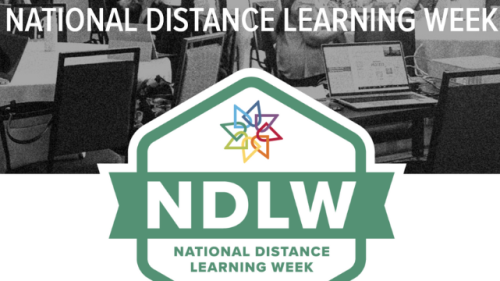Human activity has had an effect on the environment for thousands of years, from the time of our very earliest ancestors. Since Homo sapiens first walked the earth, we have been modifying the environment around us through agriculture, travel and eventually through urbanization and commercial networks. At this point in earth’s physical history, our impact on the environment is so substantial that scientists believe “pristine nature,” or ecosystems untouched by human intervention, no longer exist.1
In ways both positive and negative—and likely in more ways than you’d even think—human civilization and technology have affected our earth, altering our planet forever. Consider these five tangible impacts our species has had on the environment, and whether you’re one who will advance their effects or intercede to halt them.
1. The Population Bomb
Human overpopulation has been affecting the environment for hundreds of years and a concern for scientists since at least 1798, when Thomas Malthus first published his finding that, without significant and ongoing technological innovation, the human population would almost certainly outstrip the planet’s food supply. In 1968, this concern was again raised in Stanford professor R. Paul Ehrlich’s book “The Population Bomb.”2
Accommodating population growth has been a root cause for much of the impact we’ve had on our environment. Since Malthus first noted his grave concerns, technological advances have created a new double-edged sword: health and abundance. Our food supply today can support more lives than ever, and advances in medical science have led to increasingly longer lifespans. But this reality has the profound side effect of reducing population turnover and leading to its rapid expansion. So as our quality of life and life expectancy improve, the challenges wrought by overpopulation accelerate as well.3
2. Agriculture, Domesticated Animals and Genetic Modification
The demand to feed a growing human population has facilitated notable advances in agriculture, which was the first major human innovation to enable our survival as a species. Early agriculture allowed hunter-gatherer cultures to settle an area and cultivate their own food. This immediately impacted the environment by transplanting non-native species to new areas, and by prioritizing the cultivation of certain plants and animals over others. And more recently, advances in genetic modification have raised concerns about the environmental impact of newly developed crops.4
In particular, the domestication of livestock and other species, including dogs and cats, by early humans affected the environment by altering the land in significant ways. Grazing animals contributed to environmental change by depleting native grasses and contributing to soil erosion. And we now know that the rapid expansion of cattle populations to meet human dietary demands has contributed substantially to changes in the composition of gases within the atmosphere.5
The industrialization of agriculture in the last several centuries has exacerbated these effects, but it has also prompted a subsequent wave of counter-movements, which seek to undo the negative effects of human intervention. People today are increasingly aware of the impact vast factory farms have on the environment, and seek to return to smaller farms and even urban gardens. As “eating local” rises in popularity, urban land is being reclaimed for traditional agriculture and the environment is once again altered due to human labor.6
3. Deforestation…and Reforestation
Growing populations have to be housed, which means they seek more space to build homes and cities. This often involves clearing forests to make room for urban and suburban development, as well as to provide building materials. Currently, it is estimated that 18 million acres of trees are clear-cut every year to create space for development and to be used in wood products.7
Deforestation has many effects, including decreasing oxygen levels (and increasing greenhouse gases), elevated risk of soil erosion and the destruction of animal habitats. But as is the case with industrial agriculture, some groups have endeavored to create a positive counter-impact to deforestation’s detrimental effects on the environment. Reforestation efforts seek to replace as much forest land as possible every year, and it is currently estimated that about 40 percent of the trees removed each year are being replaced.8
4. Pollution
Human activities affect the environment by contributing to air pollution, or the emission of harmful substances into the air. While it can be difficult to understand which pollutants are associated with specific effects on the environment or public health, it is generally accepted that air pollution can indeed cause public health problems and also harm plant and animal life.9
Pollution isn’t just limited to the air. It can affect soil or waterways and can come from human waste, industrial chemicals and other sources. These toxins can exert tremendous effects on the natural world, leading to environmental degradation and problems like acid rain and harmful algal blooms in the ocean.
Environmental protection laws on the local and federal level have been enacted as a means to stem the ecological damage caused by pollution, and some communities have engaged in ongoing conversations aimed toward promoting sustainable, low-impact living.
5. Global Warming and Climate Change
Among the most critically impactful ways that humans have affected the environment is our extraction and consumption of fossil fuels and their attendant CO2 emissions. Recent studies indicate that CO2 emissions contribute to the deterioration of the earth’s ozone layer, which may, in turn, contribute to global climate change; this is especially true when emissions are combined with the loss of the carbon-sink effect of forest lands (due to deforestation) and existing particulate matter in the air.10 Though the scale and impact of such climate change are up for debate, the scientific community has reached a consensus that human activity does have some degree of impact on the global climate.
Human Impact on the Environment is a Double-edged Sword
The expansion of human population and the requirements of our growing human family place strenuous demands on our environment. Through human intervention, we have altered our ecosystem forever. However, though some of these changes may be negative, humans also have the power to correct our mistakes and change our environment for the better.
Discover how you can contribute to a thriving future for our planet. Explore the online Master of Geographic Information Science from Kent State University, and find your opportunity to work toward the renewal of the earth’s ecosystem, from its forest grounds to its water resources and farmlands.
Sources:
- Retrieved on April 27, 2018, from washingtonpost.com/news/energy-environment/wp/2016/06/06/theres-basically-no-landscape-on-earth-that-hasnt-been-altered-by-humans-scientists-say/?noredirect=on&utm_term=.9f2d44e5dd06
- Retrieved on April 27, 2018, from forbes.com/sites/quora/2017/08/21/what-does-overpopulation-have-to-do-with-global-warming/#e90df2a16fa5
- Retrieved on April 27, 2018, from conserve-energy-future.com/causes-effects-solutions-of-overpopulation.php
- Retrieved on April 27, 2018, from news.virginia.edu/content/largest-ever-study-reveals-environmental-impact-genetically-modified-crops
- Retrieved on April 27, 2018, from theguardian.com/environment/2017/sep/29/methane-emissions-cattle-11-percent-higher-than-estimate
- Retrieved on April 27, 2018, from americanhistory.oxfordre.com/view/10.1093/acrefore/9780199329175.001.0001/acrefore-9780199329175-e-179
- Retrieved on April 27, 2018, from interestingengineering.com/10-ways-humans-impact-the-environment
- Retrieved on April 27, 2018, from dirt.asla.org/2014/03/18/watching-global-deforestation-and-reforestation-happen/
- Retrieved on April 27, 2018, from ourworldindata.org/air-pollution
- Retrieved on April 27, 2018, from climate.nasa.gov/evidence/






